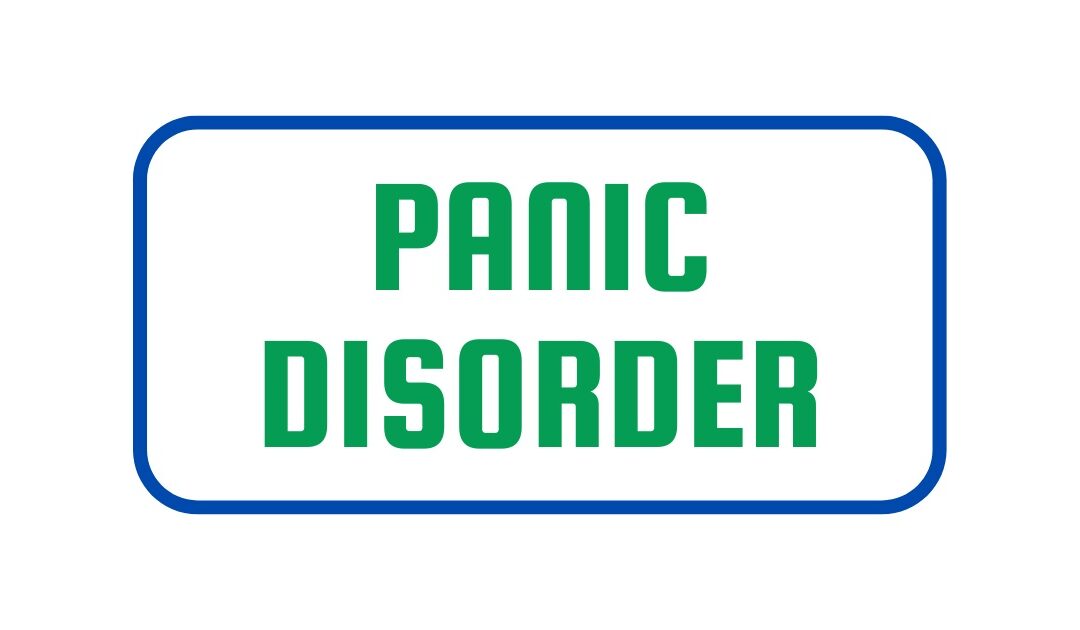A panic attack is defined as a sudden rush of intense fear or dread, which is usually accompanied by several of the following symptoms: racing or pounding heart, shortness of breath, chest pain or discomfort, dizziness, feeling faint or unsteady, trembling or shaking, sweating, choking sensations, nausea or abdominal distress, numbness or tingling sensations, hot flashes or cold chills, feelings of being detached or things seeming unreal, fears of going crazy, fears of losing control, and fears of dying. In a true panic attack, these physical symptoms are not caused by a medical condition or physical illness. Typically, a physician can rule out a physical cause for the symptoms experienced during a panic attack. If a medical condition or physical illness can be ruled out, then a diagnosis of Panic Disorder might be applied.
How is Panic Disorder Treated?
Medication: There are a variety of anti-anxiety medications available for people with Panic Disorder. One common type of anti-anxiety medication is Benzodiazepines (e.g., Xanax, Ativan, Klonopin). A significant problem with repeatedly using a Benzodiazepine to treat symptoms of a panic attack is that the underlying cycle that causes panic is not addressed. That is, the Benzodiazepine is more like a “Band-Aid” covering up the problem, rather than a long-term solution to the problem.
Cognitive-Behavioral Therapy (CBT): CBT is a widely used treatment for people with Panic Disorder. Based on the theory of CBT, fear is reinforced and maintained by negative thoughts and avoidance of situations. Thus, common interventions include changing thoughts and behavior.
The four primary components of CBT for Panic Disorder include:
- Re-education about the physical symptoms of anxiety and panic, to correct misinterpretations of them as being harmful or dangerous
- Training in methods for reducing physical tension, usually by breathing retraining or relaxation
- Repeated exposure to feared and avoided situations
- Repeated exposure to feared and avoided physical sensations
Given the propensity for negative automatic thoughts, CBT therapists educate clients about panic attacks as a “false alarm” of the body’s important alarm system. Therapists explore clients’ specific fears about panic (e.g., “I’m going to die,” “I’m having a heart attack,” “I’m going to lose control”) and provide important information about the scientific evidence about panic attacks. Therapists also help clients with Panic Disorder test some of these fears and assumptions.
CBT therapists also train clients to use relaxation techniques, such as deep breathing and muscle relaxation. These are not intended as ways to completely control the fear and physical sensations during a panic attack, but as a way to maintain a sense of control of one’s body.
CBT for Panic Disorder also involves exposure to feared situations and physical sensations. Systematic exposure to these situations and sensations reduces the person’s fear of them. It also teaches the person that the situations and sensations are not dangerous. After repeatedly experiencing feared situations, clients realize that their fears rarely (if ever) come true, and anxiety related to these situations is reduced. Exposure to specific body sensations is designed to help clients experience these sensations while realizing they are not in fact dangerous. When fear of the body sensations is lessened, so is the fear of the return of a panic attack.
Acceptance and Commitment Therapy (ACT)
ACT is a new therapy that has been applied to many disorders, including Panic Disorder. ACT focuses not on reducing symptoms, but on accepting symptoms and moving in the direction of things that the client values in life. In an ACT model, the problem is not the symptoms, but the way in which individuals respond to those symptoms. In treatment for Panic Disorder, ACT focuses on decreasing avoidance of the physical symptoms of panic attacks and the feeling of intense fear. Avoiding these things often keeps the person from obtaining goals and acting in line with his or her values.
ACT interventions include discussion of attempts to control thoughts, feelings, and physical sensations, and the alternative strategies of willingness and acceptance. Through use of metaphors, therapists help clients to see what their true values are and how they can more effectively move in that direction with their lives, along with any negative emotions and experiences. Many of the aforementioned CBT techniques can be used in the ACT intervention as well.
Where can I get more information about Panic Disorder?
Websites:
- Anxiety Disorders Association of America (http://www.adaa.org/)
- Association for Behavioral and Cognitive Therapies (http://www.abct.org/)
- Freedom from Fear (http://www.freedomfromfear.org/)
- Academy of Cognitive and Behavioral Therapies (http://www.academyofct.org/)
Books for Patients:
- CBT: Mastery of Your Anxiety and Panic: Workbook (Barlow & Craske, 2006)
- ACT: Mindfulness and Acceptance Workbook for Anxiety (Forsyth & Eifert, 2008)
- Get Out of Your Mind and Into Your Life: The New Acceptance and Commitment Therapy (Hayes, 2005)

